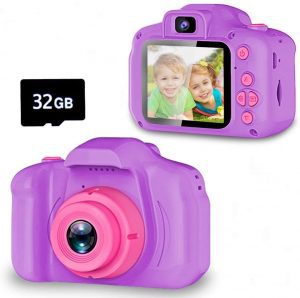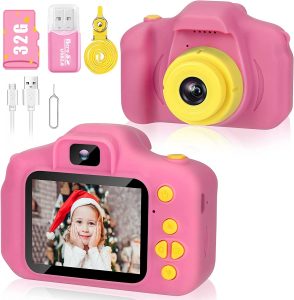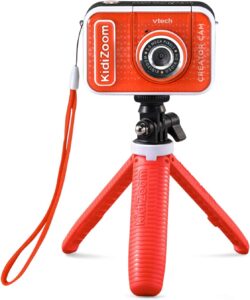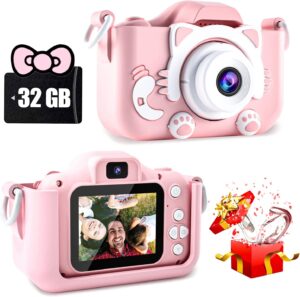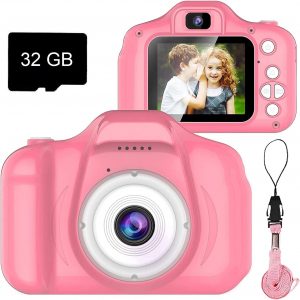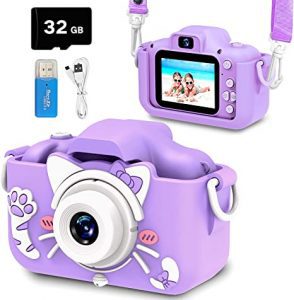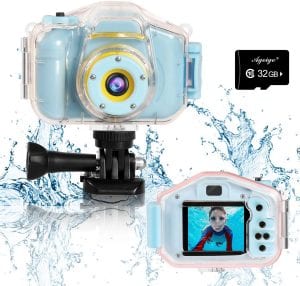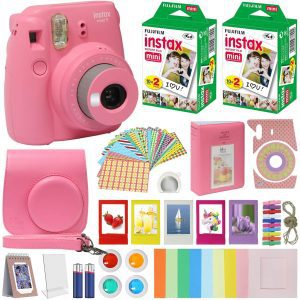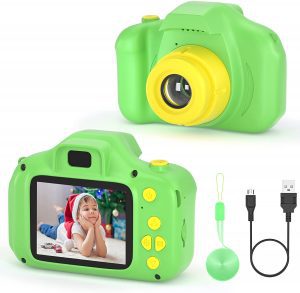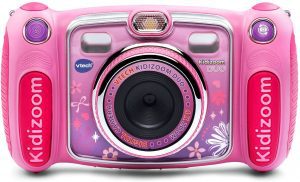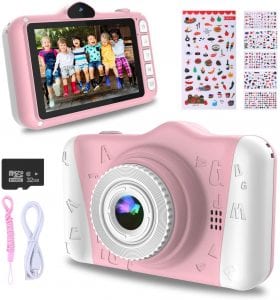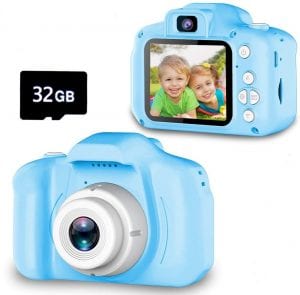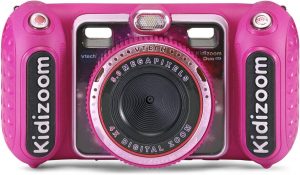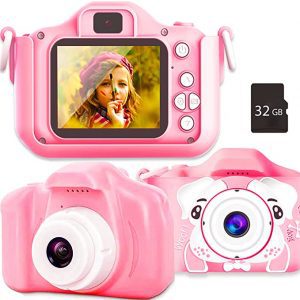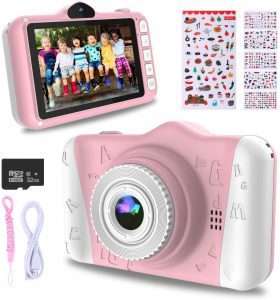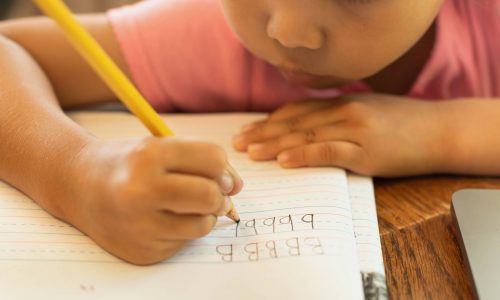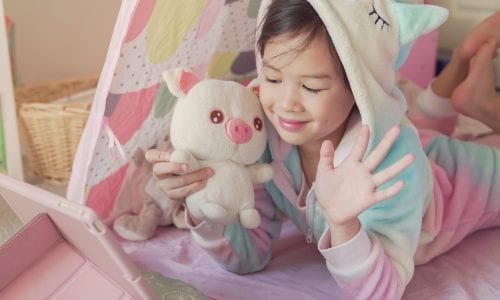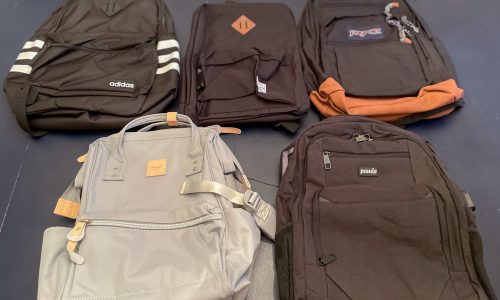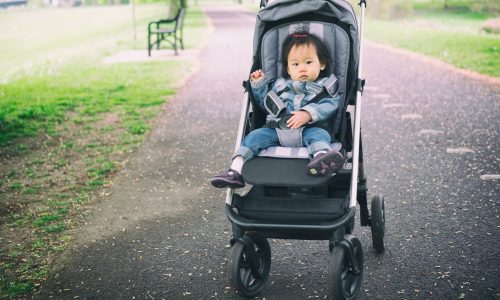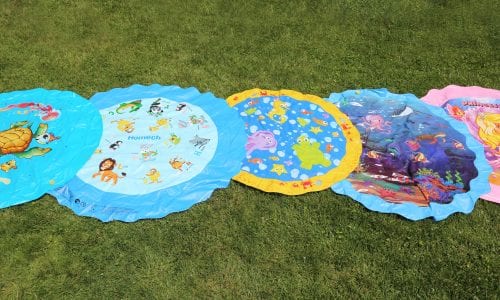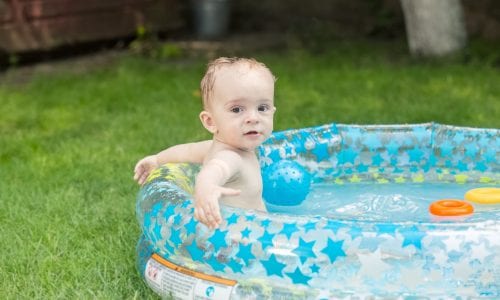The Best Cameras For Kids
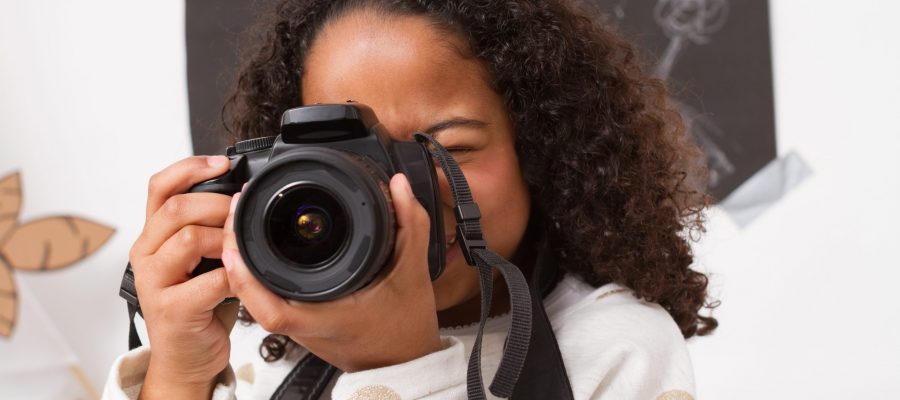
Our Review Process
Don't Waste Your Money is focused on helping you make the best purchasing decision. Our team of experts spends hundreds of hours analyzing, testing, and researching products so you don't have to. Learn more.
Our Picks For The Top Cameras For Kids
- 1. Seckton USB Connecting Shockproof Camera For Kids
- 2. Desuccus Compact Rechargeable Camera For Kids
- 3. VTech Compact Tripod Camera For Kids
- 4. CIMELR Cat-Themed Rechargeable Camera For Kids
- 5. Dylanto Automatic Funny Frames Camera For Kids
- 6. Goopow Compact Cat Camera For Kids
- 7. Agoigo Multi-Functional Waterproof HD Camera For Kids
- 8. Fujifilm Instax Mini 9 Auto Exposure Camera For Kids
- 9. VATENIC Lightweight Time Lapse Camera For Kids
- 10. VTech Kidizoom Duo LCD Screen Camera For Kids
- 11. WOWGO High Capacity Non-Toxic Camera For Kids
- 12. Seckton Long-Lasting Drop-Proof Camera For Kids
- 13. Fujifilm Instax Mini 9 Camera For Kids
- 14. VTech Kidizoom Built-In Games Camera For Kids
- 15. Sinceroduct Compact Digital Camera For Kids
- 16. WOWGO Gift Eco-Friendly Camera For Kids
This camera for kids has recently undergone and upgrade, so it now produces even more stunning photos. The camera comes in one of four colors and has just five buttons that make it easy to use. It also features a shockproof outer shell, a video and voice recorder and a USB port for quick charging.
Make Great MemoriesIncluded with this camera for kids is a 32-gigabyte memory card.
Available in blue or pink, this camera for kids is an excellent starter camera. It's designed for children as young as 3 and features 15 frames and six filters. The camera even comes with five fun games to keep kids entertained in between picture taking.
Lots of MemoryThis camera for kids includes 32 gigabytes of memory.
Snapping photos and shooting videos has never been easier than with this camera for kids. It comes with a tripod and all the settings needed for students to create their own home movies. You can even get the camera in a choice of pink or red.
Capture the MagicSince this camera for kids comes with a 3.7-volt rechargeable lithium battery, parents won't have to worry about replacement battery costs.
Young photographers will love that this camera for kids is available in the shape of either a cat or a cow. The camera makes for an excellent gift and comes with a protective case that keeps the device safe when dropped. Younger children will find the camera easy to operate and parents will love that a 32-gigabyte memory card is included with each ...
Multiple Color OptionsYou'll find this camera for kids comes in a choice of pink, blue or purple.
Buying Guide
These days, taking a photo or a selfie is second nature for many kids. Having used their parents’ smartphones or digital cameras since childhood, kids have experienced how much fun it is to document parts of their lives on camera. Getting a camera for kids is an excellent way to help them hone their artistic skills and give them an outlet for creative expression. Not only that, giving kids their very own camera can launch discussions about science and technology, how cameras work and the history of cameras. Plus, cameras inherently encourage communication, as kids can share their photos with their friends and family and discuss what elements they are trying to capture.
When looking for a camera for kids, it’s important to make sure it is age-appropriate. When is a child ready for their own camera? It largely depends on the child and their interests. Some preschoolers and kindergarten-age children may be ready for their own cameras if they have a budding interest in photography, while others may not want one till they are in their teens.
Ensure that the physical size of the camera matches that of your child. Older kids whose hands are larger may have trouble with small cameras with tiny buttons. Similarly, little kids who are still working on their fine motor skills may have trouble navigating a camera with complex controls.
In terms of technical features, opt for a camera that has several functions. An adequate zoom range lets kids play around with their camera frame and figure out what exactly they want to include in the shot. Video capability is ideal for older kids who want to begin filming short scenes. A simple user interface is ideal for all ages because it makes the camera easy to use without parental instruction.
What to Look For
- When your child first gets the camera, take some time to orient both yourself and them on the basic functionality. Depending on their age, you can go through the instruction manual together, or read it yourself to answer some basic questions. Show your child how to turn the camera on and off, how to snap a photo, how to zoom in and out and how to delete a photo.
- Depending on the age of the child, you can also show them when to use the flash or when not to, in addition to where to position a source of light when taking a photo. You can also discuss how to upload the camera photos onto a computer, how to charge the camera, as well as where the memory card and batteries go.
- Once you have shown them the basics of how the camera works and how they can use it, let them explore the rest. Kids are naturally curious. Giving them the freedom to figure out how they want to take photos and what they want to document will enable them to grow their creative side and discover their artistic skills. If they have questions about photography technique, you can guide them or point them towards other resources, but it’s best to let them have some fun before getting into the technical aspects of photography.
- If your child is old enough to use social media, have a discussion on what kinds of photos are appropriate to share and what kinds of photos should not be made public on any online platforms. Also discuss getting consent from any people within the photos before sharing publicly.
More to Explore
What will you do with the hundreds of photos your kids take? Soon enough, they will fill up their memory card and will be asking for more space to store their works of art. Make it a point to go through the photos once a month and delete anything that is blurry, out of focus or repetitive. If kids are old enough, you can give them the task to sort out what to keep and what to delete. This will give you some more room on your memory card. You can also upload the photos onto a computer and sort them out there. Be sure to print some and hang them around your home to encourage your kids’ artistic side.

